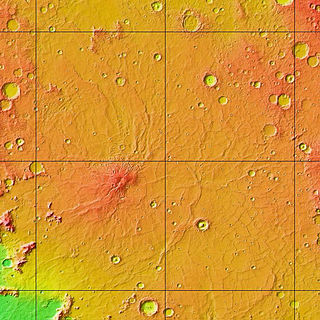Hesperia or Hesperian may refer to:
Hesperia or Hesperian may refer to:
Mars is a planet in the Solar System.
Clio is the muse of history in Greek mythology.
Doris may refer to:
Castro is a Romance language word that originally derived from Latin castrum, a pre-Roman military camp or fortification. The English-language equivalent is chester.
Albion is an archaic and poetic name for the island of Great Britain.
Helen may refer to:
Lusitanian mythology is the mythology of the Lusitanians, an Indo-European speaking people of western Iberia, in what was then known as Lusitania. In present times, the territory comprises the central part of Portugal and small parts of Extremadura and Salamanca.
Drake may refer to:

Hesperia is a large, M-type main-belt asteroid. It was discovered by the Italian astronomer Giovanni Schiaparelli on April 29, 1861 from Milan, while he was searching for the recently discovered 63 Ausonia. It was his only asteroid discovery. Schiaparelli named it Hesperia in honour of Italy. The asteroid is orbiting the Sun with a period of 5.14 years, a semimajor axis of 2.980 AU, and eccentricity of 0.165. The orbital plane is inclined by an angle of 8.59° to the plane of the ecliptic.
Asia is the world's largest continent.
Plato was a Greek philosopher.
The Argo is the ship captained by Jason in Greek mythology.
Urania is a muse in Greek mythology.
Xanthe is a name with origins in Greek mythology. People with this first name include:
Olympus or Olympos may refer to:

Hispania was the Roman name for the Iberian Peninsula and its provinces. Under the Roman Republic, Hispania was divided into two provinces: Hispania Citerior and Hispania Ulterior. During the Principate, Hispania Ulterior was divided into two new provinces, Baetica and Lusitania, while Hispania Citerior was renamed Hispania Tarraconensis. Subsequently, the western part of Tarraconensis was split off, initially as Hispania Nova, which was later renamed "Callaecia". From Diocletian's Tetrarchy onwards, the south of the remainder of Tarraconensis was again split off as Carthaginensis, and all of the mainland Hispanic provinces, along with the Balearic Islands and the North African province of Mauretania Tingitana, were later grouped into a civil diocese headed by a vicarius. The name Hispania was also used in the period of Visigothic rule.

The Hesperian is a geologic system and time period on the planet Mars characterized by widespread volcanic activity and catastrophic flooding that carved immense outflow channels across the surface. The Hesperian is an intermediate and transitional period of Martian history. During the Hesperian, Mars changed from the wetter and perhaps warmer world of the Noachian to the dry, cold, and dusty planet seen today. The absolute age of the Hesperian Period is uncertain. The beginning of the period followed the end of the Late Heavy Bombardment and probably corresponds to the start of the lunar Late Imbrian period, around 3700 million years ago (Mya). The end of the Hesperian Period is much more uncertain and could range anywhere from 3200 to 2000 Mya, with 3000 Mya being frequently cited. The Hesperian Period is roughly coincident with the Earth's early Archean Eon.

Hesperia Planum is a broad lava plain in the southern highlands of the planet Mars. The plain is notable for its moderate number of impact craters and abundant wrinkle ridges. It is also the location of the ancient volcano Tyrrhena Mons. The Hesperian time period on Mars is named after Hesperia Planum.

The geological history of Mars follows the physical evolution of Mars as substantiated by observations, indirect and direct measurements, and various inference techniques. Methods dating back to 17th-century techniques developed by Nicholas Steno, including the so-called law of superposition and stratigraphy, used to estimate the geological histories of Earth and the Moon, are being actively applied to the data available from several Martian observational and measurement resources. These include landers, orbiting platforms, Earth-based observations, and Martian meteorites.
In Greek mythology, Hesperia or Hesperie, may refer to the following characters and places: